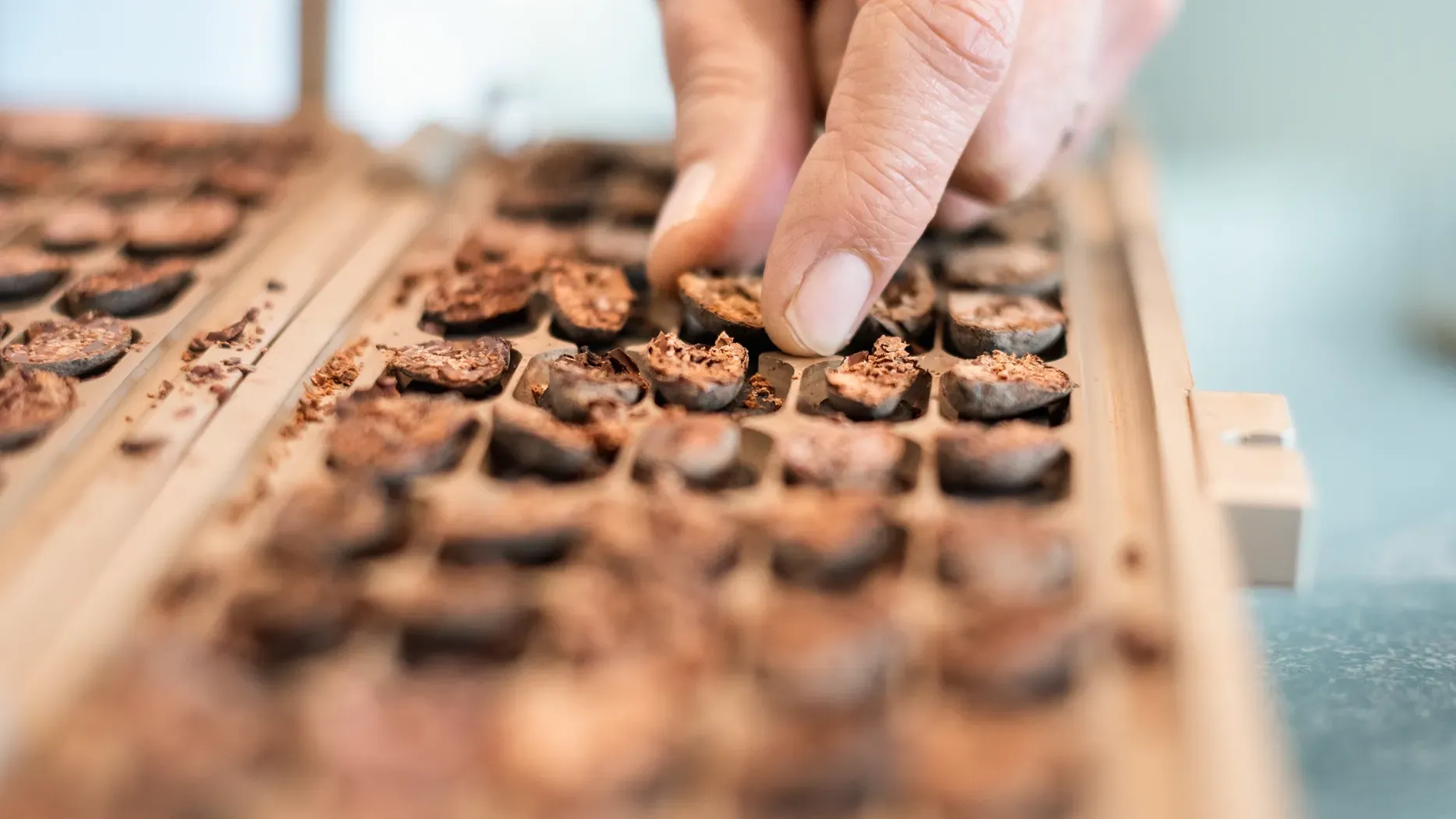Our Farm
EL CACAO
OUR FARM
EL CACAO
Our heart beats for chocolate and to make it particularly delicious, we even grow our own cocoa – on our El Cacao farm in Nicaragua. Since 2012, we have been developing a cocoa farm on former pasture land into a good place for cocoa, people and nature.
1,200
HECTARES OF PROTECTED FOREST AREA
30,000
SHADE TREES
1 MIO.
COCOA TREES
2,500
HECTARES IN TOTAL
1,200
HECTARES OF CULTIVATED AREA
10
YEARS
OF OWN COCOA
YEARS
OF OWN COCOA
10
2,500
HECTARES
IN TOTAL
1,200
HECTARES OF
PROTECTED
FOREST AREA
30,000
SHADE TREES
1,200
HECTARES OF
CULTIVATED AREA
1 MIO.
COCOA TREES
Our heart beats for chocolate and to make it particularly delicious, we even grow our own cocoa – on our El Cacao farm in Nicaragua. Since 2012, we have been developing a cocoa farm on former pasture land into a good place for cocoa, people and nature.
Good Soil for
GOOD COCOA
IN 2012
We took over land whose soil had been severely affected by previous intensive livestock farming. Soil erosion and the loss of humus layers were also due to previous slash-and-burn farming methods.
AFTER 2 – 4 YEARS
By establishing a mixed culture with cocoa trees and a variety of other plants, as well as measures such as composting and soil liming, we managed to restore and strengthen the soil structure.
TODAY
There is active soil life on El Cacao once again. Thanks to the development of the agricultural land in an agroforestry system with several levels of shade, we have developed a sustainable, resilient and CO2-positive cultivation system. The rich diversity of plants and animals shows that EL Cacao is a good place. No wonder our sloth and Ritter Sport ambassador Don Schoko and his friends have made their home here.
Discover our
FARM
Discover our
FARM
What makes El Cacao special
GOOD FOR PEOPLE
What makes
El Cacao special
GOOD FOR PEOPLE

Slide title
Write your caption hereButton
Slide title
Write your caption hereButton
Slide title
Write your caption hereButton
"LIFE HAS CHANGED FOR THE PEOPLE
HERE"
Hauke Will
Head of Agricultural Production
at Alfred Ritter GmbH & Co. KG
"LIFE HAS CHANGED FOR THE PEOPLE HERE"
Hauke Will, Head of Agricultural Production at Alfred Ritter GmbH & Co. KG

Slide title
Write your caption hereButton
Slide title
Write your caption hereButton
Slide title
Write your caption hereButton
MATT NOVAK
Gerente General Agricola Ritter Sport Nicaragua S.A.
“El Cacao is a special place. With the Ritter family, we have an owner here who is willing to leave half of the land to nature. One who is willing to invest in young people.”

YADIRA RAMIREZ
Employee in post-harvest treatment at El Cacao
“El Cacao represents a great opportunity. For me personally, because I can develop career-wise. But also for the whole country, because here we have the opportunity to advance cocoa cultivation in my home country under good ecological and social conditions.”

HAUKE WILL
Director Agricultural Production at Alfred Ritter GmbH & Co. KG
“The greatest success of El Cacao is that we have managed to bring together Nicaraguan cocoa knowledge and German technical expertise to create something completely new together. We are also developing knowledge here that will benefit farmers in other regions of the world. Knowledge that makes us a competent partner.”

RESPONSIBLE EMPLOYER – SOCIAL BENEFITS AND SECURITY
Around 400 people now work on El Cacao, where they not only receive comprehensive social benefits, but also a secure job in every sense of the word. The farm’s own medical station ensures that employees receive medical care.
OPPORTUNITIES THROUGH EDUCATION – LA ACADEMIA
We also invest in the education and professional development of our employees at El Cacao. Because the infrastructure for this is lacking locally, we have set up our own “La Academia”. Join us for a day on El Cacao.
What makes El Cacao special
GOOD FOR NATURE
EL CACAO IS A CLIMATE-POSITIVE PLANTATION
The cocoa cultivation on El Cacao is a climate-positive system on its 1200 hectares in an agroforestry system, which means that:
El Cacao is a climate-positive plantation, which means that it binds more greenhouse gases than it releases into the atmosphere. In fact, El Cacao is an officially recognised Gold Standard climate protection project.
RESPONSIBLE EMPLOYER – SOCIAL BENEFITS AND SECURITY
Around 400 people now work on El Cacao, where they not only receive comprehensive social benefits, but also a secure job in every sense of the word. The farm’s own medical station ensures that employees receive medical care.
OPPORTUNITIES THROUGH EDUCATION – LA ACADEMIA
We also invest in the education and professional development of our employees at El Cacao. Because the infrastructure for this is lacking locally, we have set up our own “La Academia”. Join us for a day on El Cacao.



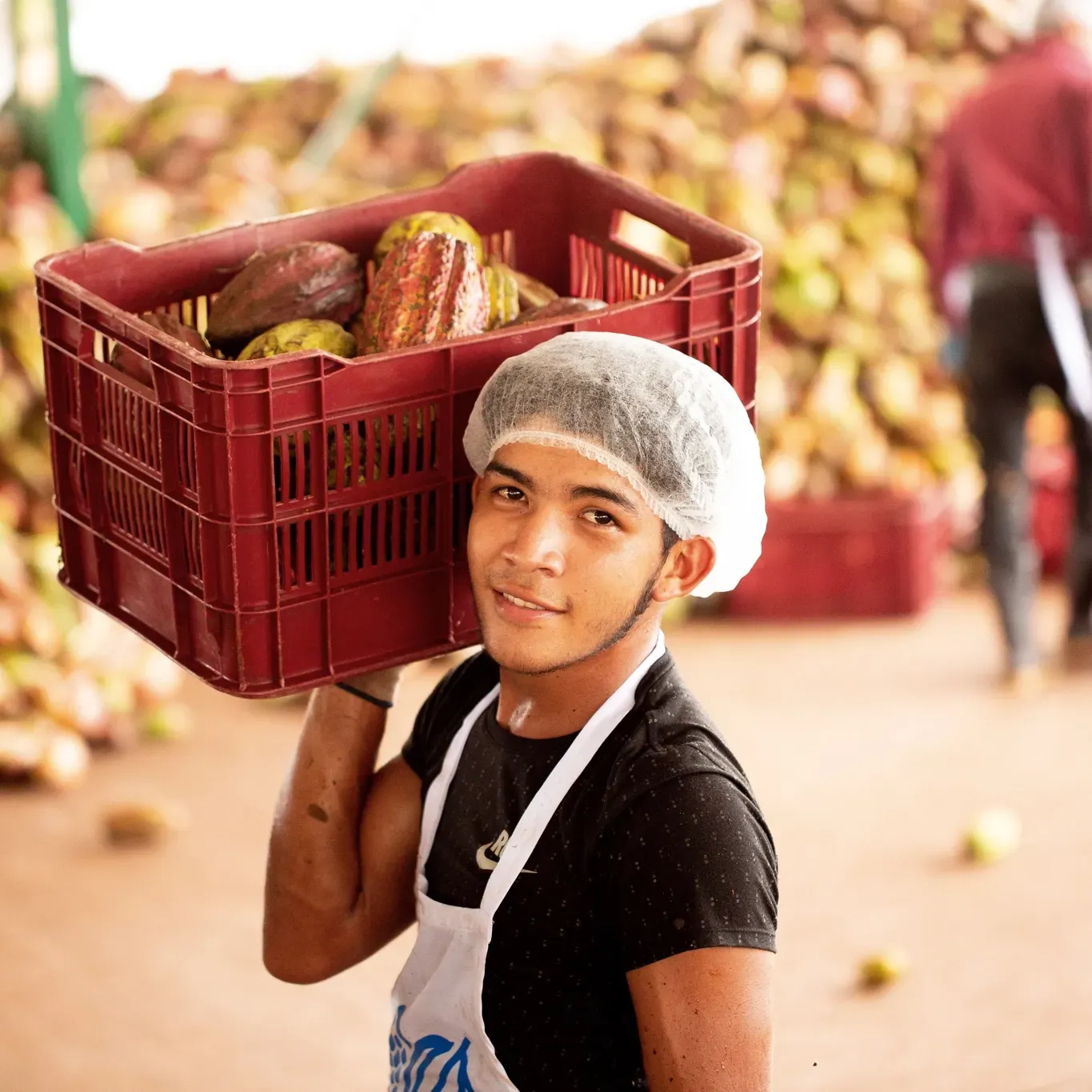

What makes El
Cacao special
GOOD FOR NATURE

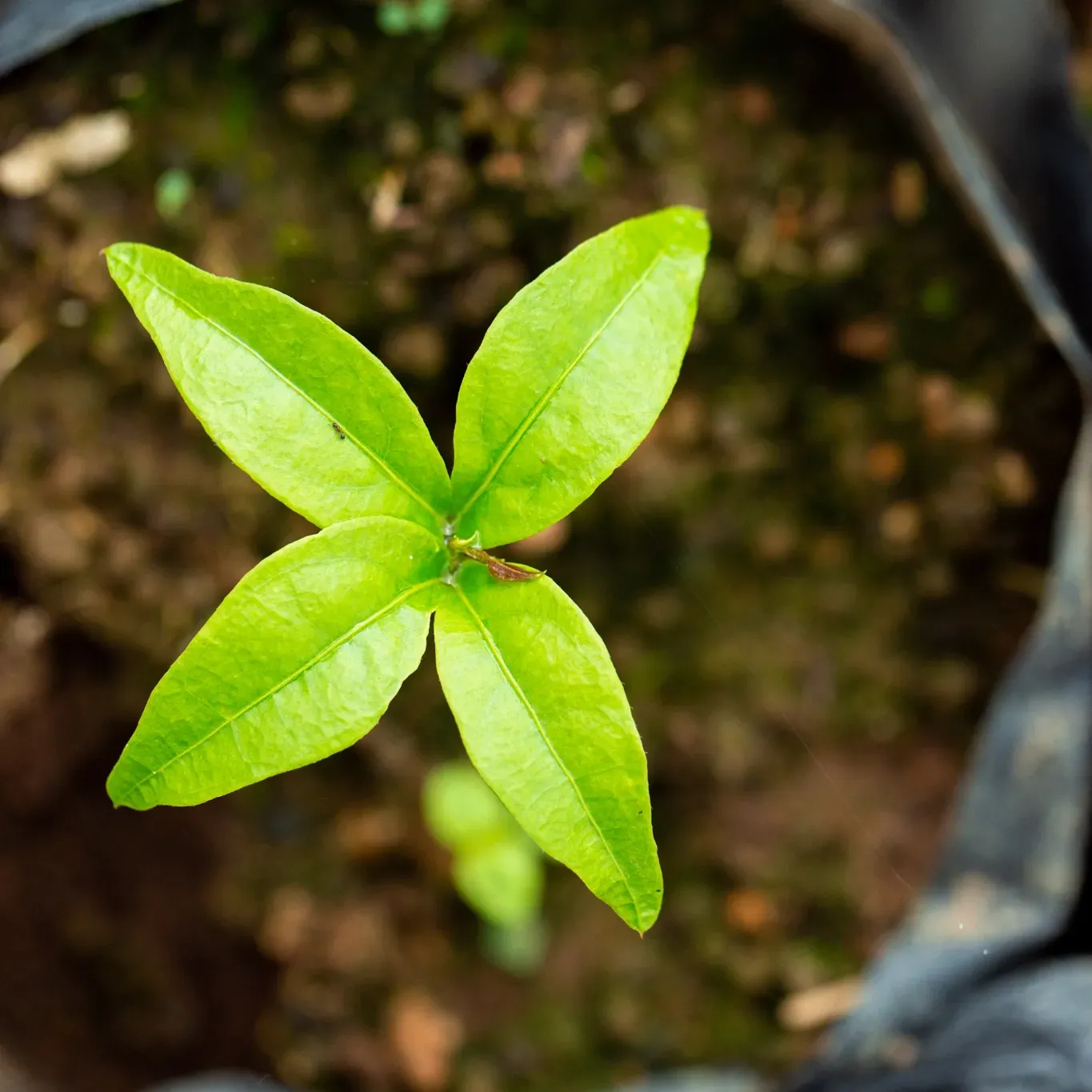

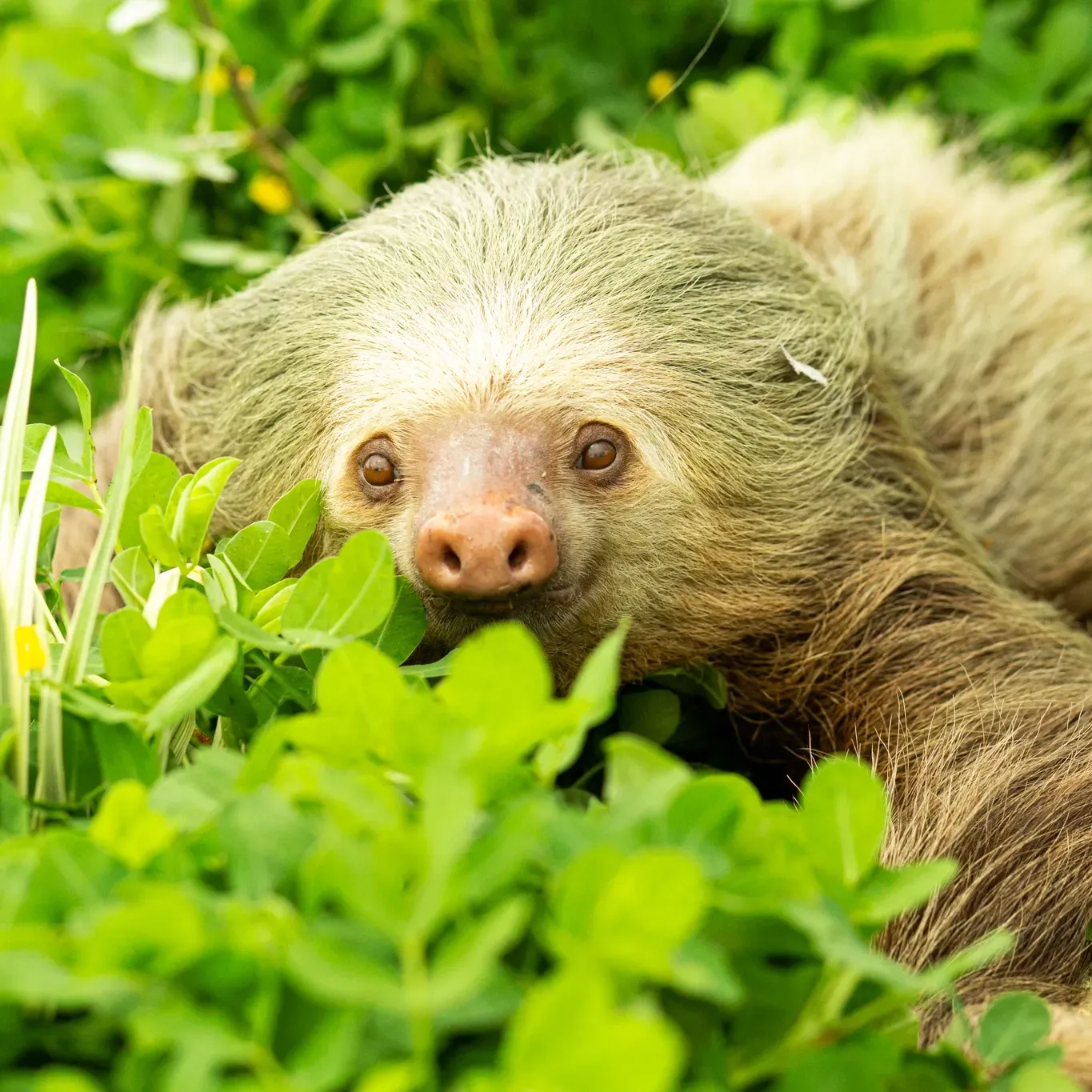
EL CACAO IS A CLIMATE-POSITIVE PLANTATION
The cocoa cultivation on El Cacao is a climate-positive system on its 1200 hectares in an agroforestry system, which means that:
El Cacao is a climate-positive plantation, which means that it binds more greenhouse gases than it releases into the atmosphere. In fact, El Cacao is an officially recognised Gold Standard climate protection project.
MORE
THAN A MILLION TREES FOR
THE
CLIMATE
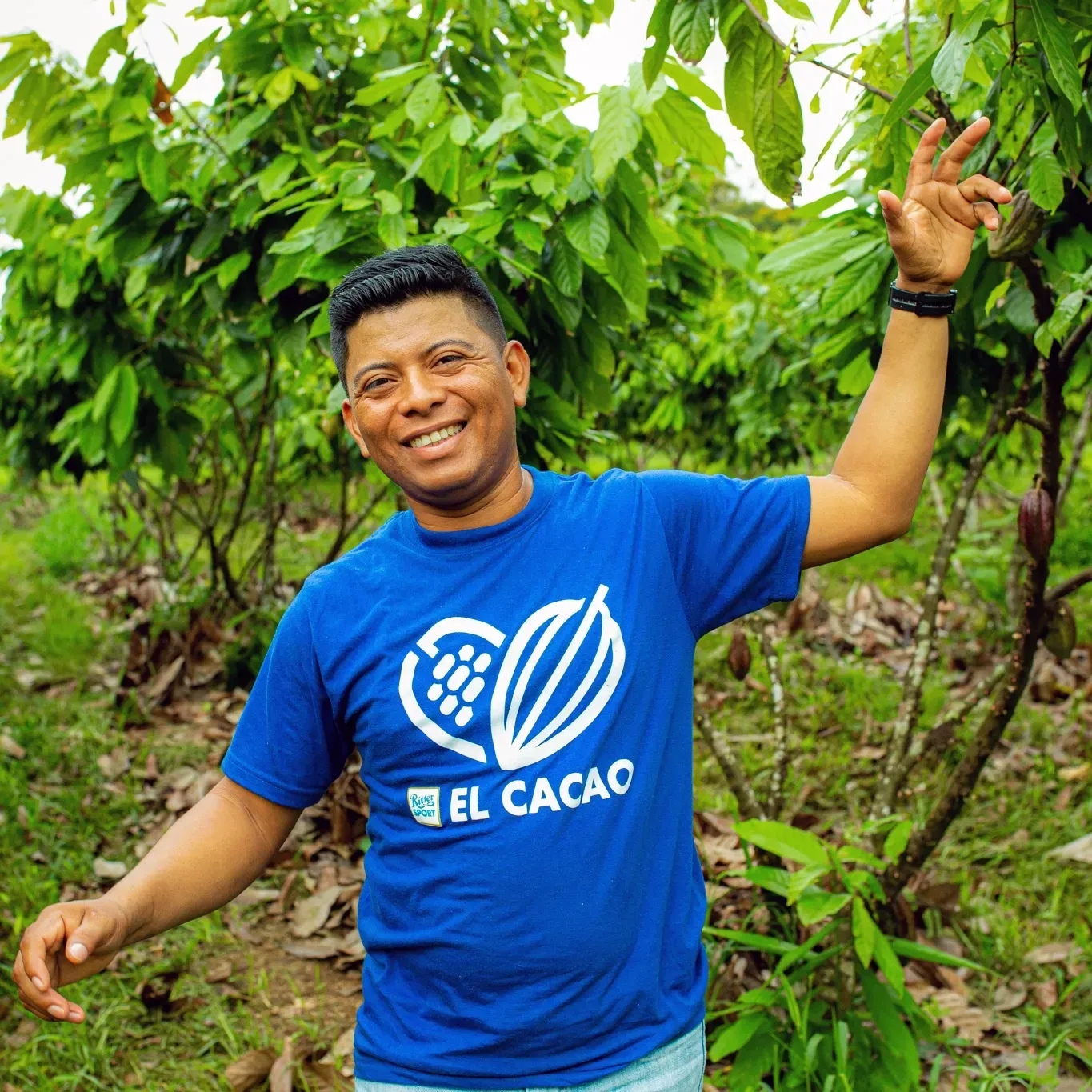
REGENERATION OF FORMER PASTURE LAND THROUGH AN AGROFORESTRY SYSTEM
Only half of El Cacao’s land is used for cocoa cultivation. We have reforested fallow former pasture land with over one million cocoa trees and around 30,000 shade trees.
PROTECTING OUR RAINFOREST
On El Cacao, there are around 1,200 hectares of unspoilt forest and wetlands, which we protect permanently. Protecting the rainforest is double important to us: for the global climate as well as for the microclimate on the plantation.
SUSTAINABLE COCOA FARMING: THE AGROFORESTRY SYSTEM ON EL CACAO
On El Cacao, we do not simply grow cocoa just like that, but in an agroforestry system – an ecologically sound mixed cultivation of cocoa trees and native trees and shrub species. These provide shade and protection from the wind, improve the soil, and create a habitat for a variety of animals.
OUR INTEGRATED AGRICULTURE: PRINCIPLES THAT MAKE A DIFFERENCE
Our farming methods follow the principles of Integrated farming, which include, for example, energy efficiency, the avoidance of emissions (climate-positive), sustainable soil fertility, composting, and biodiversity.
BIODIVERSITY AT HEART: DON SCHOKO AND HIS FRIENDS ON EL CACAO
The protection of unspoilt forest and wetland areas on El Cacao significantly promotes biodiversity. El Cacao is now home to over 200 different species of flora and fauna, a true paradise for our sloth Don Schoko, the Ritter Sport brand ambassador, and his friends. The development of biodiversity on El Cacao is regularly measured and scientifically monitored.
MORE THAN A MILLION TREES FOR THE CLIMATE

REGENERATION OF FORMER PASTURE LAND THROUGH AN AGROFORESTRY SYSTEM
Only half of El Cacao’s land is used for cocoa cultivation. We have reforested fallow former pasture land with over one million cocoa trees and around 30,000 shade trees.
PROTECTING OUR RAINFOREST
On El Cacao, there are around 1,200 hectares of unspoilt forest and wetlands, which we protect permanently. Protecting the rainforest is double important to us: for the global climate as well as for the microclimate on the plantation.




SUSTAINABLE COCOA FARMING: THE AGROFORESTRY SYSTEM ON EL CACAO
On El Cacao, we do not simply grow cocoa just like that, but in an agroforestry system – an ecologically sound mixed cultivation of cocoa trees and native trees and shrub species. These provide shade and protection from the wind, improve the soil, and create a habitat for a variety of animals.
OUR INTEGRATED AGRICULTURE: PRINCIPLES THAT MAKE A DIFFERENCE
Our farming methods follow the principles of Integrated farming, which include, for example, energy efficiency, the avoidance of emissions (climate-positive), sustainable soil fertility, composting, and biodiversity.
BIODIVERSITY AT HEART: DON CHOCO AND HIS FRIENDS ON EL CACAO
The protection of unspoilt forest and wetland areas on El Cacao significantly promotes biodiversity. El Cacao is now home to over 200 different species of flora and fauna, a true paradise for our sloth Don Schoko, the Ritter Sport brand ambassador, and his friends. The development of biodiversity on El Cacao is regularly measured and scientifically monitored.
OUR COCOA
MORE THAN BEANS
The cocoa bean is the most important ingredient in our chocolate. But we also know that the cocoa fruit has more to offer than just beans. That is why at El Cacao we focus on the comprehensive utilisation of this great fruit.
We also compost the shells on our El Cacao farm and thus return essential nutrients to the soil.

Our Cocoa
MORE THAN BEANS
The cocoa bean is the most important ingredient in our chocolate. But we also know that the cocoa fruit has more to offer than just beans. That is why at El Cacao we focus on the comprehensive utilisation of this great fruit.
We also compost the shells on our
El Cacao farm and thus return essential
nutrients to the soil.

CACAOVIDA
We extract delicious cocoa juice from the pulp, which we use for our Cacao Vida products.

COCOA SHELL
COCOA BEANS
COCOA PULP
CACAOVIDA
We extract delicious cocoa juice from the pulp, which we use for our Cacao Vida products.

COCOA SHELL
COCOA BEANS
COCOA PULP









